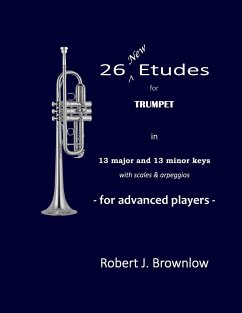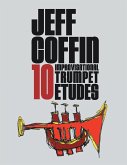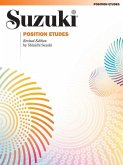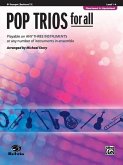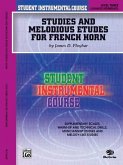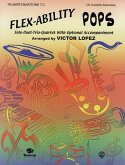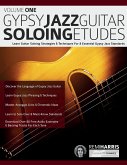A companion book to: "Concert Duets for Trumpet" Words from the author: It is important that aspiring musicians become fluent in all of the major and minor keys. When I was a student, I was never entirely satisfied with the few choices of resources that contained well-written etudes in all keys. There have been some attempts but many of them have some standard keys missing, others are purely technical and lacking in musicality. Others were too high or too long and left them out of reach of emerging players. Further, finding a single resource that laid out all of the major and minor scales and arpeggios in a simpler manner was more difficult than it should have been. I did not need or want several pages of the same scale written out in a dozen or more rhythmic patterns and meters. As a result, I started playing the scales from memory in a manner that suited me. I have included these scales in this book. I also wrote them in such a way to include arpeggios at the end of each scale. This eliminates the need to have separate scales and arpeggio exercises. I recommend that all players from emerging ones to professionals play all the major and minor scales every day. Once the scales are memorized, the player will be ready to begin playing them with more speed. Eventually, all the scales can be played quite quickly and be completed in a very short time. At this point, you will find that many things may be easier for you as a player: sight-reading, transposition, or improvisation for example. THE ETUDES I have attempted to write etudes that are accessible enough for young, emerging players but still be enjoyable and challenging by even the most advanced players. I tried to avoid writing in a purely technical manner and made a concerted effort to make them musically rewarding, fun to play, and diverse in style and material. Of the 26 etudes, 24 of them are in a unique time signature. Only 4/4 and 6/8 time were used twice. While a few of the meters I chose are rarely used in common practice, it is still important that students are familiar with them. Too many etude books write in only a handful of the most common time signatures and as a result, the rhythmic patterns in the etudes tend to fall in similar and predictable patterns. I made a conscious effort to keep the length of every etude manageable. Some etudes are too long for younger players and they become tests of endurance rather than of technique and musicality. Along these same lines, I avoided writing notes above concert G5. This way, most of these etudes will be able to be played even by players whose range is still developing. TEMPO MARKINGS I did place a metronome marking at the beginning of every etude. They are merely suggestions. Some of them may need to be played slower, especially at first. Others you may choose to play faster than the suggested. OTHER BENEFITS Having been a teacher of music theory for a number of years, I cannot stress enough the importance and benefits of knowing all major and minor scales and arpeggios. The reasons for this are too numerous to explain here. What I can say is that having scales memorized, and being able to recall them quickly will help with the study of intervals, triads, aids melodic dictation skills and more. All of the aforementioned topics are an integral part of any higher education music theory course. To listen to the etudes, visit: www.back2classic.us.
Hinweis: Dieser Artikel kann nur an eine deutsche Lieferadresse ausgeliefert werden.
Hinweis: Dieser Artikel kann nur an eine deutsche Lieferadresse ausgeliefert werden.

